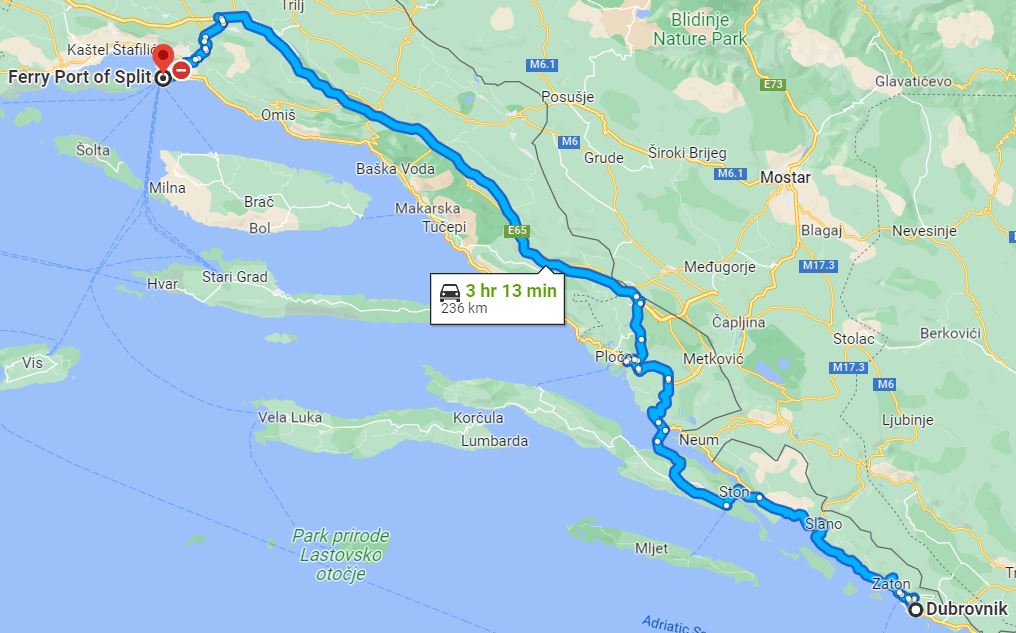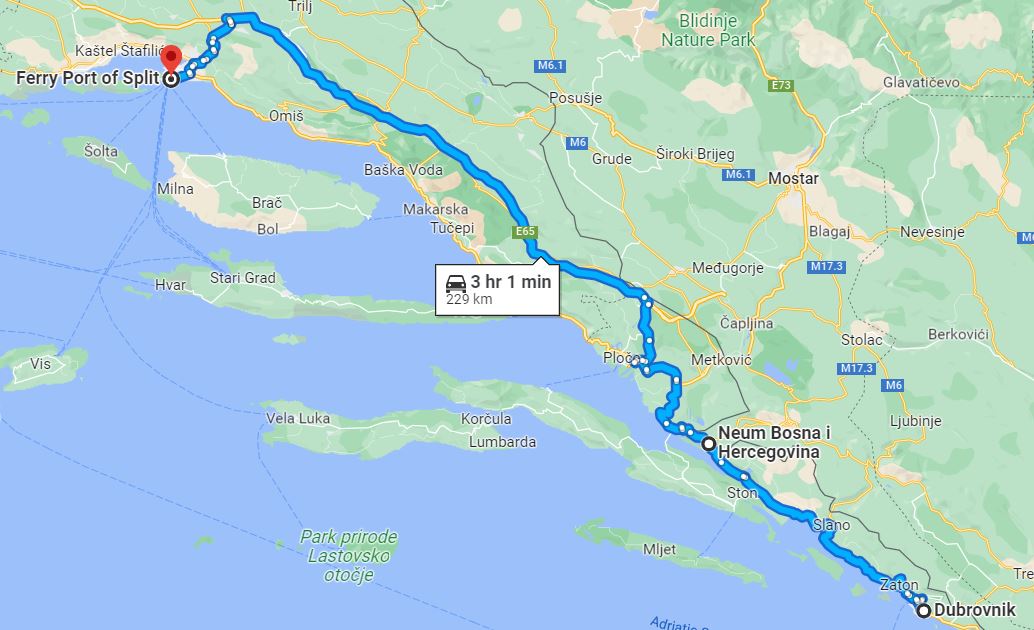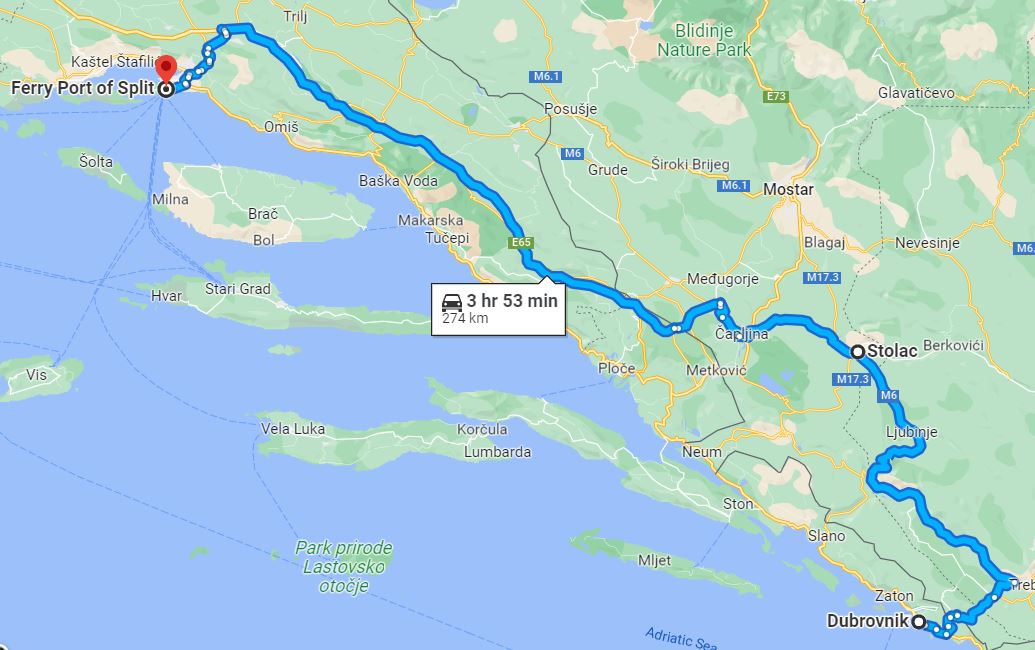Which is Quicker, Split to Dubrovnik via Peljesac Bridge or Neum Corridor?
July 29, 2022 - After the euphoria of the opening of the Peljesac Bridge subsides, an intriguing look at the quickest way from Split to Dubrovnik.
It has been quite a week with the opening of the Peljesac Bridge, and it was a true privilege to have attended the event. So much pride at Croatia finally being connected, so much pride in an excellent construction project that was reported around the world - I personally received messages about the opening from California to Malaysia.
The bridge will certainly have an impact in a number of ways, including much-improved access to the islands of Korcula and Mljet, for example (check out my trip from Korcula to Split on the first day of the bridge being open), but how much time will it save for those wanting to make that most popular of journeys, from Split to Dubrovnik?
The answer might surprise you.
Before we delve in, there is one huge variable in the equation - the time it takes to cross the Neum Corridor in Bosnia and Herzegovina. Out of season, I generally wait under 2 minutes at either crossing, but in season, that can be 2 hours each. And on those occasions, the bridge is a true lifesaver.
But if traffic is quite normal, how does the picture look? I checked with Google Maps a little earlier - three different routes - Neum Corridor, Peljesac Bridge, and an inland route which is my preferred route in peak season. With little traffic causing delays, this is what I found.
Split to Dubrovnik is 236 km and takes 3 hours 13 minutes, with the very nice additional benefit of no border crossings.
Split to Dubrovnik via the Neum Corridor is actually 7 km shorter and will get you there 12 minutes faster IF there is no traffic at the border. If it is packed, then you can add several hours to your journey - or choose the bridge. The big advantage travellers have these days is that technology can inform of delays and queues, and so you can decide which route as you get closer and assess the current situation.
I travel from Split to Dubrovnik a lot, so which of the two would I choose? Next time, I would definitely go via the bridge (I LOVED the experience from Korcula) for the novelty factor, but I would probably choose Neum for a number of reasons (as will a number of Dubrovnik residents I chatted to on the subject).
Firstly, the bridge will take away a lot of the traffic problems from the Neum Corridor, so waiting lines will inevitably be less. But Neum is also a good place to stop and break the journey. I almost always stop for a hearty lunch in my usual spot in Neum - the prices are ridiculous compared to their Dalmatian counterparts. Tour buses do the same, and I expect most of that trade to continue.
But people also choose Neum for the shopping. Cigarettes, fuel, and pretty much everything else is cheaper there, so a chance to stock up on things.
But if I was making the Split to Dubrovnik journey in peak season, I usually take a third route, which leaves the coast behind entirely and runs along a totally deserted road in Republika Srpska. It may be longer in distance and seem to take longer, but in peak season, it is the one which is the quickest and least stressful, with almost no traffic and some fantastic nature.
Which is your preferred Split to Dubrovnik route, and why?
Have you been across the Peljesac Bridge yet? Here was my first drive on the opening day.
And how was traffic on the bridge and via Neum on the opening day - check out my video report above.
****
What is it like to live in Croatia? An expat for 20 years, you can follow my series, 20 Ways Croatia Changed Me in 20 Years, starting at the beginning - Business and Dalmatia.
Follow Paul Bradbury on LinkedIn.
People Also Ask Google: Why is Croatia Split in Two Parts?
February 16, 2021 - Continuing the new TCN series answering the questions posed by Google's 'People Also Ask' feature, why is Croatia split in two parts between Split and Dubrovnik?
Why is Croatia split in two?
Wait? What?!? What do you mean you have to leave the EU, enter another country and reenter the EU if you want to go between the two Croatian hotspots of Split and Dubrovnik? How can that make any sense?
And yet - for now - it is true. For many years, my shallow understanding of the reason why was that Croatia had ceded territory to Bosnia and Hercegovina in the border realignment following the breakup of former Yugoslavia and the subsequent regional war which ended in 1995. I had always thought that Neum was included in the newly independent BiH to give the country access to the sea. But it turns out that the roots of the answer to the question why is Croatia split in two lies - as many things in this region do - in history.
The Bosnian riviera - a look back in history
Dubrovnik may be one of the world's most famous cities today, either in its own right or through its Game of Thrones alter ego, Kings Landing, but it was once better known as Ragusa, the name of the Dubrovnik Republic. Though tiny, the Dubrovnik Republic punched above its weight on the world stage, becoming a major trading and diplomatic centre. And a very progressive one. Slavery was abolished in Ragusa in 1416.
Dubrovnik's misfortune/opportunity was being stuck between two great powers - Venice and the Ottoman Empire. During the Great Turkish War in the late 17th century, Dubrovnik sided with the Turks, who ended up on the losing side. At the 1699 Treaty of Karlowitz in 1699, the victorious Hapsburg Empire and Venice were given large tracts of Ottoman lands. In order to buffer itself from Venetian attack, Dubrovnik gave away a small strip of land at its northern tip. This resulted in that land (including the modern-day town of Neum) becoming part of the province of Bosnia and Hercegovina in the Ottoman provinces.
That decision centuries ago would come into play once more in 1995, as post-Yugoslav borders were finalised.
This video gives a lot more detail on the historical aspects, as well as some useful maps over the centuries.
The Neum Corridor had been born.
And it has been terrorising and panicking tourists ever since.
Driving from Split to Dubrovnik through Bosnia and Hercegovina
SO many people have contacted me in a total panic over the years when they realise that they have to leave Croatia to get from Split to Dubrovnik and vice versa. If I had a euro for every email...
In practice there is no problem at all, provided your documents are in order and you have a valid passport (Croatians can travel with the ID card). The border crossing used to be very lax, with border police often waving vehicles though without checking documents, but July 1, 2013 changed all that. On that day, Croatia joined the EU, and the Neum corridor became home to not one but two external EU borders.
Driving through Neum takes about 11 minutes. You are advised to stick to the speed limits, as the Bosnian police occasionally see an opportunity to add to the State finances from their temporary visitors.
Rental cars and the Neum corridor
Do you need insurance to cross this slither of non-EU territory. Technically yes, and you must have a green card when travelling around BiH (you can buy at the border), but in practice nobody checks. Rental cars will be covered with a green card, but make sure you double check.
Transiting Bosnia from Split to Dubrovnik in COVID-19 times
Travel advice changes daily at the moment due to the pandemic. At time of writing (Feb 16, 2021), travellers can transit Bosnia, including the Neum corridor, without the need for a PCR test. Please be advised that you have a maximum of 12 hours to enter and exit. And they DO time you. And they WILL fine you if you overstay. This shouldn't be a problem transiting Neum - the journey takes about 11 minutes.
For the latest advice, check out the TCN Daily Travel Update. If you have a question, the Total Croatia Travel INFO Viber community can help you solve it (you will need to download the Viber app).
What are the border waiting times and procedures crossing Neum from Split to Dubrovnik?
The border has been upgraded significantly due to Croatia's EU status. Passports are usually (but not always) scanned. Out of season, a wait of more than 5 minutes is rare. During the season (at least a normal season), waits can be significant - up to two hours. Not every day, but it does happen.
What is there to see and do in Neum?

Neum represents the Bosnian Riviera, the only coast the country possesses. As such, it is not surprising that there are many apartments crammed into the small area of coast. If you are looking for a beach resort, either side in Croatia will give you a much more pleasant experience, although the prices in Neum are cheaper.
A lot of people take a break in Neum (particularly coaches), and there are several restaurants which cater to them (Orka is my one of choice - on the far side of the town from Split, on the way to Dubrovnik. You will see the mussel farms in the bay, a popular local dish.
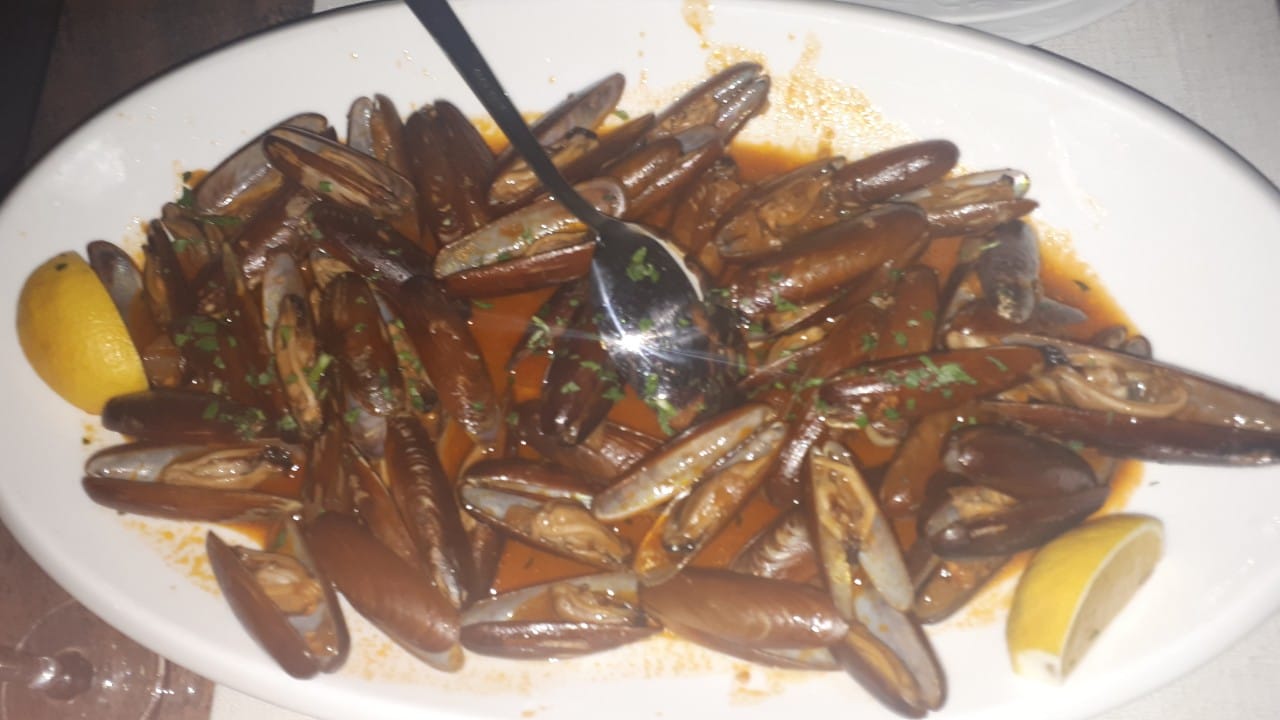
A lot of people also stop to shop. Food, drink and those beloved cigarettes are all cheaper than in Croatia, as is fuel, so a good idea to tank up.
If you have a little time, take a left on the main road at the traffic lights as you enter from Split. The historic town of Stolac is one of the most beautiful in the region and will give you a taste of the real Bosnia. It will leave you wanting more.
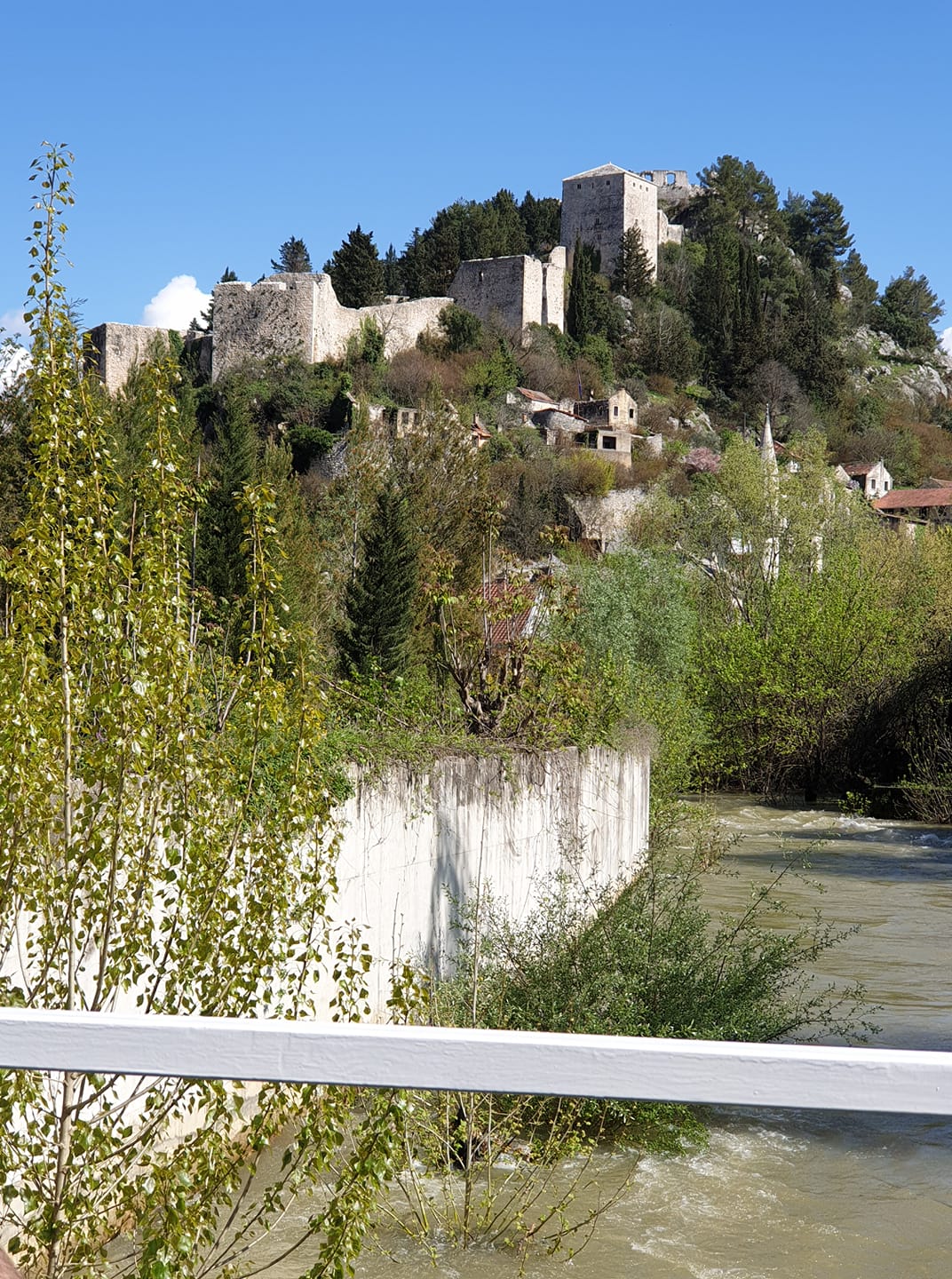
What currency is accepted when you transit the Neum corridor in Bosnia?
Pretty much anything! The town has thrived on its transit traffic for years, and every waiter seems to have various currency exchange rates programmed in his brain. I have used Bosnian Marks, Euro, kuna, US Dollars and British pounds over the years. The exchange rate of the mark is tied to the euro - one euro buys you about 1.95 KM (convertible marks, as they are known from their prior relationship with the Deutschemark).
Crossing the border from Croatia to Bosnia to Croatia - what about EU and Schengen?
Tourists are often very confused about Croatia's status regarding the EU, Schengen and border crossings. Croatia IS in the EU, but it is NOT YET in Schengen. It is scheduled to enter 'soon' (my favourite unit of time in this beautiful region - you can check the latest in this TCN section).
So if you are passing through Bosnia from Croatia to reenter the country, you have no Schengen issues. You will be leaving and reentering the EU, but in practice, you will be treated as a transit passenger.
Is it possible to go from Split to Dubrovnik without leaving Croatia?
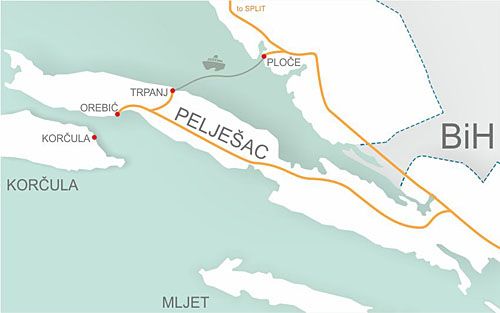
(Credit Dubrovnik Online Travel Guide)
Yes. And soon it will be even easier.
Currently, you can go from Split to Ploce. There is a short regular ferry to Trpanj on the Peljesac peninsula (home of the best Plavac Mali vineyards). At Trpnaj, turn right for the island of Korcula, or turn left and drive through the peninsula to the mainland on the other side of Neum, stopping as you must at Mali Ston, for some of the best oysters in the world.
But this trip is about to get a lot quicker.
The Peljesac Bridge - what is it and why will it change everything?
Some 30 years after it got independence, some people wonder why is Croatia split in two. it will not be for much longer. One of the key infrastructure projects for the last 30 years has been the construction of the so-called Peljesac Bridge, a 2.4 kilometre bridge which will connect the Croatian mainland on the Split side to the Peljesac peninsula, connecting both parts of Croatia for the first time.
The project has been dogged with problems over the years, and it has been something of a political football over the years. BiH objected because it would restrict access to Neum for certain types of shipping, it was claimed. In reality, the bridge will unite the two parts of Croatia and probably change the economy of Neum considerably, as there will be no need to cross the two borders.
Interestingly, several locals in Croatia have told me that they will continue to use the Neum route, as it will be quicker with less traffic, and those cigarettes ARE cheaper. I think I will too - I am quite fond of Orka restaurant, for nostalgic reasons.
When will the Peljesac Bridge be Finished?
How long is a piece of string? The project started back in (I think) 2007, but Chinese contractors were awarded the job a few years ago, and progress has been swift. The latest information is that the middle of 2022 will be the time when Croatia is finally united into one entity. You can follow the latest in this TCN section.
How is construction progress on the Peljesac Bridge?
Judge for yourself - the situation on February 15, 2021, with accompanying explanatory article.
Are there many other countries which are split in two?
Oh yes.
And quite a few, including some famous ones as Alaskans will tell you. Some strange ones such as the Kaliningrad enclave of Russia on the Polish Baltic. And Nackchivan, sandwiched between Iran and Armenia, is not ideally located for access from the rest of Azerbaijan. You can see more non-contiguous countries here.
Does Bosnia have the shortest coastline in the world?
Almost, apparently. Its 20 precious kilometres is beaten only by the 4.2 km of Monaco for shortness.
Does Croatia have any other strange border issues?
Oh, boy, does it ever. Enough for another complete article - one like this perhaps... Overview of Croatia’s Border Disputes with BiH, Montenegro, Serbia, Slovenia, Liberland. The article was written in 2017, and there may have been some slight developments, particularly with the arbitration in Piran with Slovenia.
Looking for more answers in our People Also Ask Google series? You can find them all here.


